
Sayonara Wild Hearts incorporates all 22 Major Arcana of the Tarot in its fast paced, pop-arcade, cosmic wonderland. You can check out my full review of the game here. I cannot understate how creative and ambitious studio Simogo is to have given us such a spectacularly beautiful, mesmerizing rendition of the Fool’s Journey in video game form.
I wanted to do a deep dive into the significance of Tarot cards and their meanings are used in Sayonara Wild Hearts to add a hidden layer of depth for those in know, so that’s what you’ll find in this article! I’ll be covering the entire game from start to finish (including a short explanation of Tarot at the start) so please be sure to complete the game before reading to avoid spoilers. You can also watch a play through of the game here.
Let’s pop!
Tarot – a quick explanation

The Tarot is a deck of 78 cards, 22 Major Arcana, and 56 minor arcana, which are each intended to represent a part of the spectrum of the universal human experience. From a strictly secular perspective, tarot cards can be a useful tool for self-reflection, meditation, mindfulness, self-guided therapy, and creative inspiration (I live in the secular camp).
According to certain religious and spiritual beliefs, the cards can be used for divination or other spiritualist rituals. The card imagery contains specific symbols based on storytelling archetypes from many global cultures and religions that have largely agreed upon basic meanings. They also have occult associations incorporated from the Hebrew alphabet, numerology, astrology, Carl Jung’s psychological archetypes, and more.
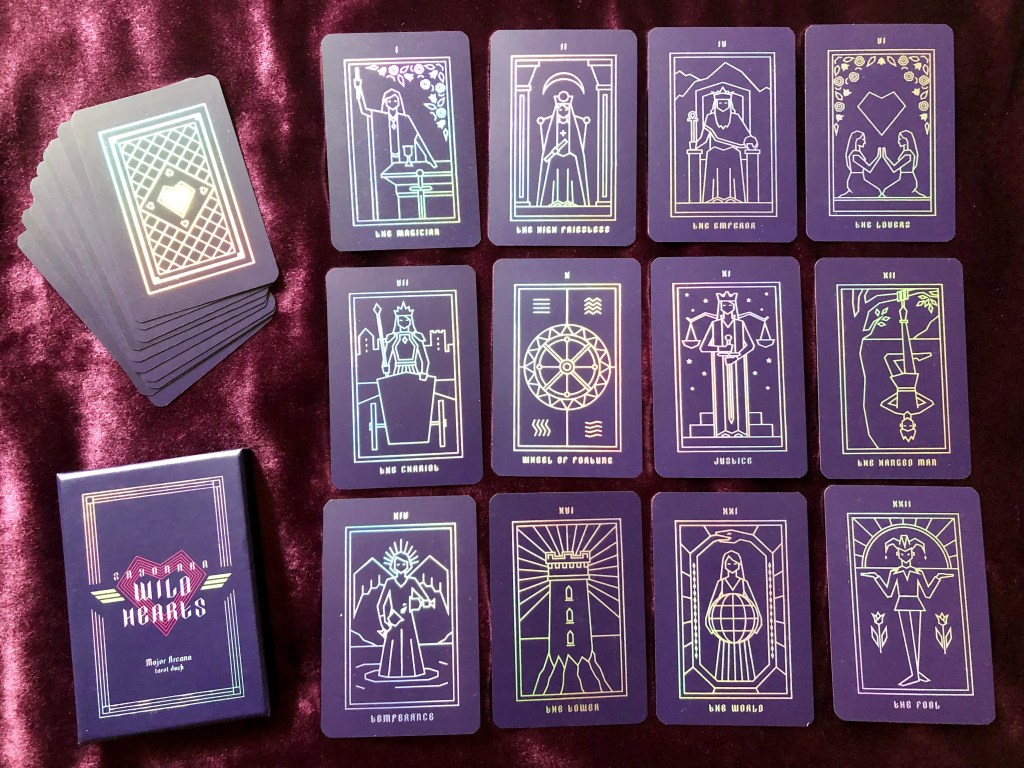
Until around 1800, the Tarot deck was a fancy Bridge deck used for a European card game called Tarocchi, with the Major Arcana being the trump cards and the Minor Arcana being the regular cards encompassing four suits. In the 1790s, a professor of occult studies applied occult associations to the cards on an academic whim and the general public, especially nobles, really took to it.
As a result, Tarot decks began to be made specifically for divination rather than card games and that led to modern spiritual beliefs about the use of tarot 200 years later. (Farley, 2009, “The Cultural History of Tarot”) The above photos are of Annapurna Interactive’s beautiful print of the cards which appear in Sayonara Wild Hearts.
The Fool’s Journey in Sayonara Wild Hearts

The 22 Major Arcana in the Tarot depict a cycle of learning and personal-emotional growth that everyone will go through as they progress through life, represented by archetypal figures and symbols, known collectively as the Fool’s Journey. These archetypes appear in varying forms across all cultures and a broad spectrum of media.

In Sayonara Wild Hearts, we see the nameless main character literally become the Fool, the first card of the Tarot deck which represents new beginnings and naivety, and sets out on her pilgrimage of soul-searching and self-discovery. The Major Arcana each appear in some form in the story of Sayonara, either as an obstacle to be overcome, an adversary to be defeated, or as a tool the Fool learns to use for her own betterment.
Knowledge in the world of Tarot is considered occult, hidden or secret, which seems to be represented by the masks all the characters wear. By the end of her journey, the Fool attains self-acceptance and triumphs, emerging from the world of the arcane as a new, healed woman.
Prologue
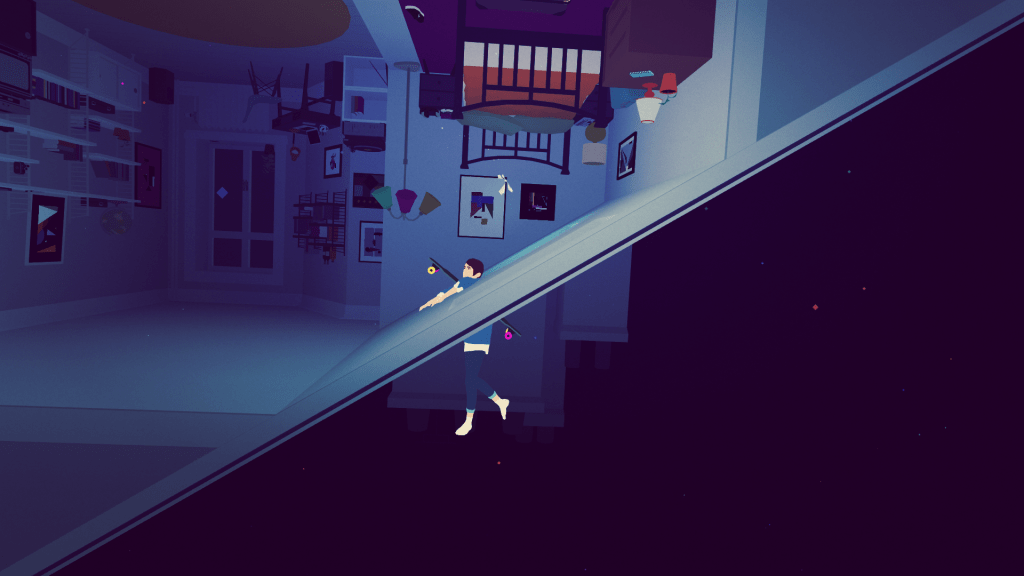
At the beginning of Sayonara Wild Hearts, the narrator explains:
“…there was a young woman who was very happy, until one day her heart broke so violently that her sorrow echoed through space and time.
Long ago a harmonious universe existed beyond ours and three divine arcana watched over it, but one night a cursed arcanum (Death) intersected the astral highways and along with her star-crossed allies (Devil, Moon, Lovers, Hermit), they stole all harmony and hid it in their vile hearts.
Before the divine trio started to fade, they created a heroine form the shards of a broken heart and hoped that she would one day be strong enough to save their world.”
We will start by defining the “universe” as the girl’s mental state or psyche, “ruled” over by the Empress, the High Priestess, and the Hierophant. These three influences fade from the Fool, driven away by her heartbreak and the interference of Death.
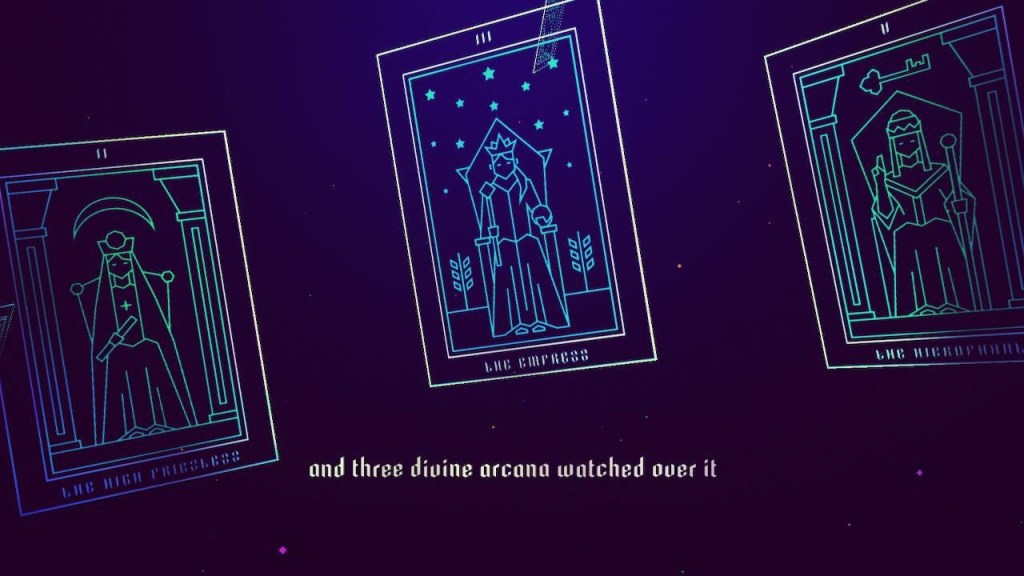
The Empress typically represents feminine power and beauty, so it would make sense that in the face of heartbreak the Fool feels powerless or no longer beautiful, perhaps due to rejection. The High Priestess above all represents inner-truth, intuition, and knowing one’s self, therefore her disappearance indicates the Fool is now dealing with self-doubt and is not listening to her instincts. The Heirophant represents wisdom and beliefs, among several less relevant associations, and so his absence indicates the Fool has lost faith and does not know what to believe in anymore.
I’ll lay out the rest of the Major Arcana implementation in order of appearance, separated into sections based on each of the bosses in the game. Note that while the Major Arcana are all used, they aren’t necessarily in the right order or portrayed to complete accuracy, I would assume for the sake of what makes the most sense from a game design perspective.
Act 1 – Dancing Devils

After learning the basic gameplay elements on her skateboard in the first stage, the Fool is thrust into the city of the Dancing Devils where she immediately encounters the Wheel of Fortune. Representing fate, destiny, and cycles of completion, the Wheel of Fortune arcanum become the tires of a mystical motorcycle that will remain available to the Fool throughout the rest of the game. She is certainly going somewhere but is not sure where– This her path of destiny, always bravely moving forward into the unknown.

The Magician is also likely to appear early on in the Fool’s quest. He reveals himself to the player when they fail a section repeatedly and offers to allow them to skip it. Embodying the manifestation of ideas, as well as skill and confidence, he offers to literally manifest your desire to succeed into reality. You can accept or turn him down. (You should probably turn him down so you don’t miss the rest of the awesome music track.)
Next the Fool challenges the Dancing Devils face-to-face. It should be noted that The Devil arcanum in Tarot is not necessarily a bad card. Yes, it can represent sins, addiction and temptation, but it can also indicate a need to focus one’s own desires for once rather than everyone else’s.

In Sayonara Wild Hearts they clearly went with the more negative meaning, since the alluring Dancing Devils are portrayed as adversaries. They challenge the Fool on wheels and with fists, resulting in bout after flashy bout as you traverse the city. Near the final clash, the ground is torn asunder beneath the Fool and she pursues the Devils over a literal pit of hellfire before finally defeating them in hand to hand combat.
Act 2 – Howling Moons
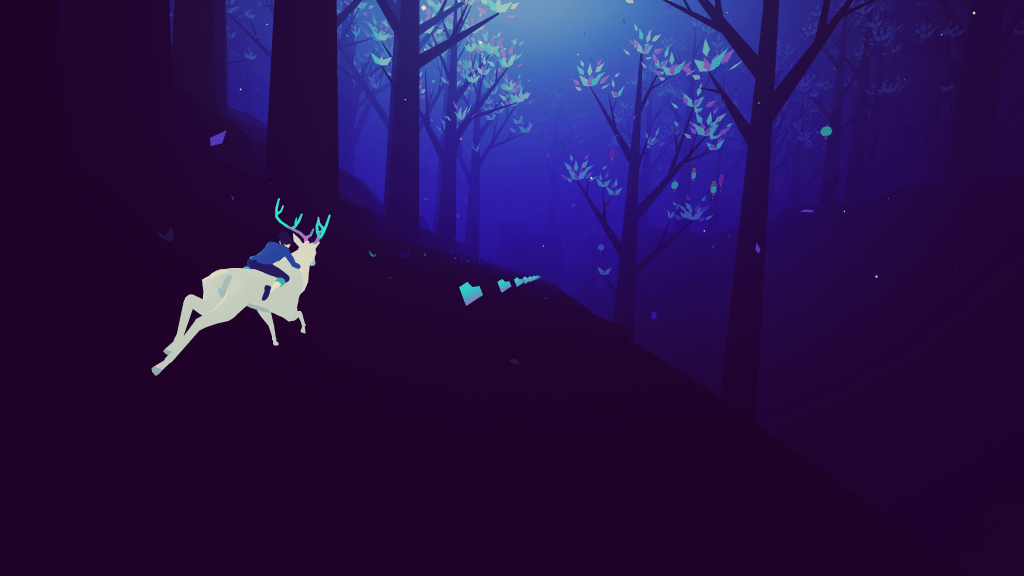
The first arcanum the Fool meets in the Howling Moons act is the Emperor, who takes the form of a shimmering, white stag. The Emperor is the card of authority, respect, leadership, and vision, often depicted by artists with antlers somewhere in the image (a classic symbol of authority). The Emperor leads the Fool through a dark, winding forest toward her goal as his insight and vision allows him to see where she needs to go to find the Howling Moons.

The next stage has the Fool chasing the Moons over a field of mushrooms with psychedelic, pulsing visuals and audio effects that bring to mind how people describe an acid trip. This does a great job of showing the “confusion” meaning of the Moon card, as well as the “crossroads” meaning in the sections where the player must decide which side of the track to take.
The following series of stages spent in conflict with the Howling Moons can be interpreted as the Fool confronting her own emotions and inner turmoil, the two other major keywords of the Moon arcanum. With the help of Justice and Judgement, which appear and become guns affixed to the sides of her motorcycle, the Fool mows down wave after wave of wolves. (A howling wolf or two are almost always on the Moon card in any Tarot deck.)

The Justice card has strong associations with balance, conscience, and order. In tandem with Judgement, which represents a final decision or awakening to a calling, we see the Fool making a decisive choice to rebalance her emotions and chase the turmoil or indecision from her heart with these tools. Finally, she defeats the Howling Moons and their giant, three headed mecha-wolf.
Act 3 – The Lovers
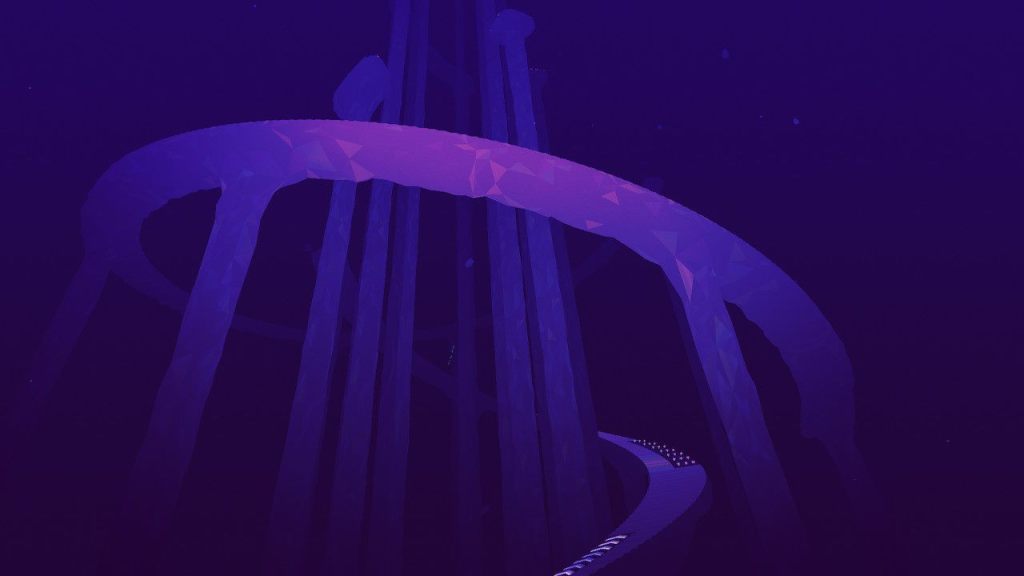
Before the Fool meets the Lovers she must climb the Tower. This arcanum typically warns of upheaval, danger, crisis, or sudden, drastic change. Art of the Tower in tarot decks often highlights someone falling from a tower’s peak as a tower crumbles to ruin. Neither of these things happen in Sayonara. Instead, after scaling the Tower, the Fool launches from the top into the sky toward a portal to the next stage. She is lucky that she is able to evade the classic fall from grace frequently seen in the Tower card.

Having made up her mind (Judgement) to confront the focus of her heartbreak, the Stereo Lovers, they challenge her to a duel by giving her the arcanum Strength, representing courage and inner power, which in the face of confrontation takes the form of her sword.
During this fight, the Fool splits the Lover in two down the middle, revealing two Lovers each wearing half of the previous two-colored mask, showing us the most well known meanings of the Lovers card, partnership and duality. The Lovers act may indicate that the Fool is dealing with knowing that the person who broke her heart has moved on without her and by defeating them finally attains closure.
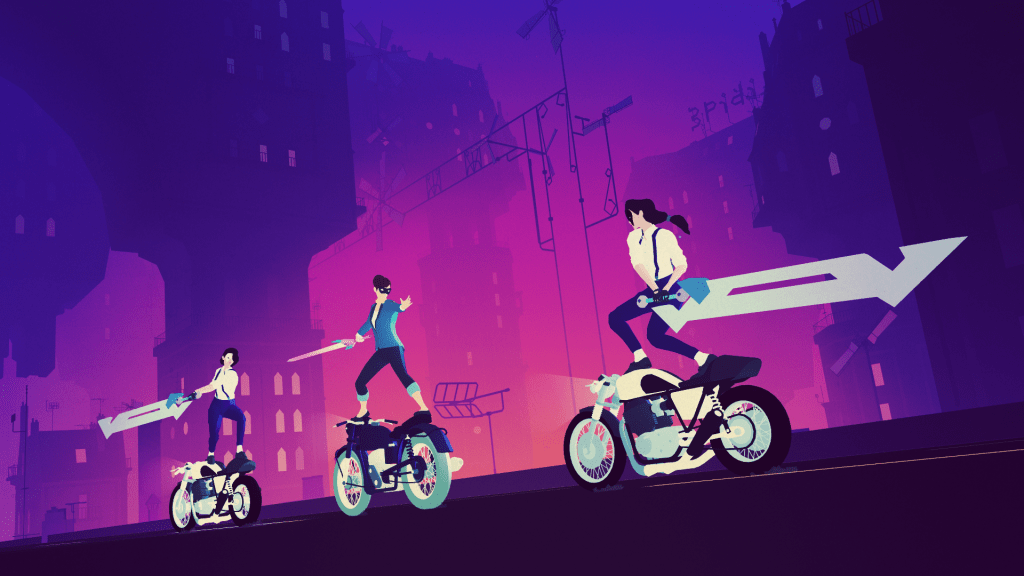
Traveling down the streets in pursuit of the Lovers, the Fool must decide between a series of branching paths, always two, reinforcing the duality aspect of the Lovers card. Another stage has the Lovers snapping their fingers to the beat, and on each snap the track switches to a mirrored version of itself. To make it through the level, the Fool must keep both sides of the “mirror” in mind. This is a clever mechanic that teaches us the opposites interpretation of the Lovers arcanum.
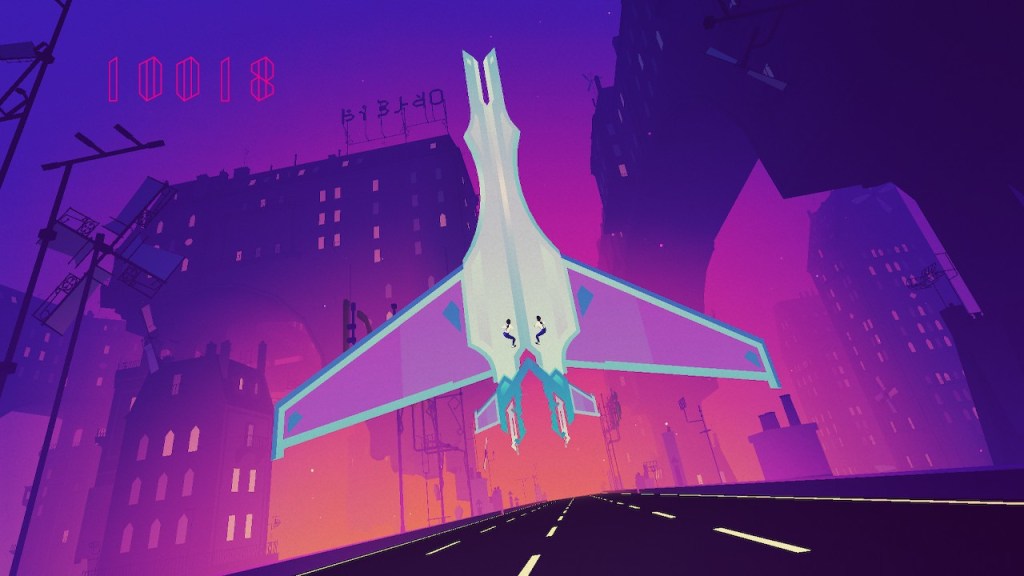
Finally the Lovers take the battle into sky, riding their two giant swords together like like an aircraft. In response, the sword of Strength morphs into a hoverboard to meet this challenge and the Fool settles the score with the Lovers far above the ground in the bright, cosmic skies.
Act 4 – Hermit64

The stages leading up to and including the conflict with the Hermit bring a notable change of pace and style compared to previous stages. Music and mechanics are both slower, quieter, and less dependent on fast action. This is a refreshing moment of respite from the breakneck speed of the other stages.
Having resolved her troubled emotions about the source of her heartbreak, The Fool mounts her Chariot, which has taken the form of a classic convertible, and heads onward alone down an empty road. The Chariot represents new determination, initiative, and progress towards a goal, or moving with a purpose.

The Fool eventually happens upon Hermit64, calm and secluded, standing in the road. The World card can be seen on the screen of Hermit64’s VR headset, which the Fool is promptly drawn into by the Hermit’s magic.
The World’s typical keyword meanings are success, achievement, completion, and fulfillment. It is a very positive card having to do with accomplishing long term goals and it is also the last card of the 22 Major Arcana, signaling the end of the Fool’s Journey toward complete enlightenment. However, the way it was used in Sayonara is as a literal (VR) “world”.
In this virtual space which can also be viewed as the Hermit’s metaphorical cave, the Fool descends deeper and deeper into the virtual World, until she finally finds him and wins a Galaga-style arcade boss fight.

The Hermit arcanum represents solitude, self-discovery, and humility. Attaining self-discovery is one of the last uncompleted steps on the cosmic checklist before the Fool can succeed at her quest and finally return to the literal real world. But there is one final obstacle in her way: she must finish her transformation into a renewed, stronger person by defeating Little Death.
Act 5 – Little Death

The next act begins with the Fool on a ship in the ocean following the Star arcanum, a card that represents guidance, direction, and renewed hope, as she searches for Little Death. Navigators of old used the stars to make their way across vast seas, so a ship makes a fine vehicle for the Star card stage. We see the remaining unused Major Arcana in quick succession after this.

The battle with Little Death takes place over several stages and the first tool the Fool acquires Temperance, her peace and harmony in the face of chaos and fear, that takes the form of a shining bow and arrows. The bow is used to eliminate flocks of flying bat-winged skulls that attempt to halt your progress, summoned by Little Death using the Hanged Man arcanum, a card indicative of delays, self-sacrifice, and martyrdom.

The Sun is used by Little Death as the circular gates and walls of electricity the Fool must dodge, though this has no apparent connection to its standard meaning as Major Arcana (clarity, growth, well-being, and joy), but we’ll give Simogo a free pass on that one. During these last several levels, the Fool will need to call on all of the tools and skills she has earned or internalized during her journey up to this point, with mechanics from past stages reappearing frequently.
Despite it’s harsh name, in the Tarot, Death does not have a strictly negative meaning, but represents a profound change, a transformation, rebirth, and even purity in being reborn. This is clearly portrayed by Little Death’s several forms as you meet in combat and peel away her layers of power to reveal new forms.
First Little Death’s wings and claws emerge, then her single, all seeing eye, and finally her body is blasted away, leaving only the massive floating eyeball that must be defeated. After stabbing straight through the eye of Death with the sword of Strength, the Death card merges with all the other boss cards and turns into… a clone of the Fool.
The Finale and Epilogue
In the final act of Sayonara Wild Hearts we see the Fool as she appeared at the start of the game in her real world clothes, replaying shortened versions of each prior boss fight. Except, instead of fighting the bosses previously encountered, she battles a copy of herself in the shoes of each of those adversaries. Rather than punching them to pieces to defeat them, the Fool instead kisses each one on the cheek and draws their energy into her body before moving on.
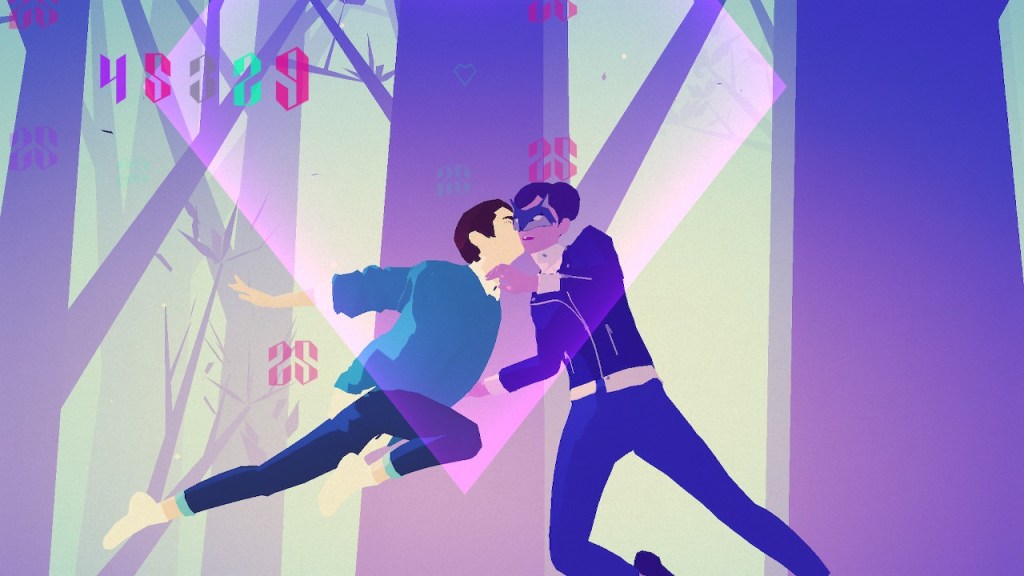
By defeating her inner shadow self in this manner, we can see that the Fool has reached emotional maturity and is willing to accept all aspects of herself, including the ones that have caused her struggle and strife. Upon final defeat, her clone morphs into the massive form of a glittering dragon and carries her home through colorful, near-blinding skies. After the she kisses and absorbs the dragon too, we hear the narrator once again as the Fool falls back through cosmic space toward home.

“Then the voices of the three divine arcana echoed from the beyond, and through the wind their words soared:
‘From the shards of a broken heart a real heroine has risen. You have restored the lost harmony of our world and now you must go and find harmony in your own.
Sayonara, wild heart.’
Not long ago in a town much like yours, there was a young woman who fell out of love, asleep, away… for years she fell through spirals of sadness and anger, until she could not fall any deeper and fell right back into her groove.”
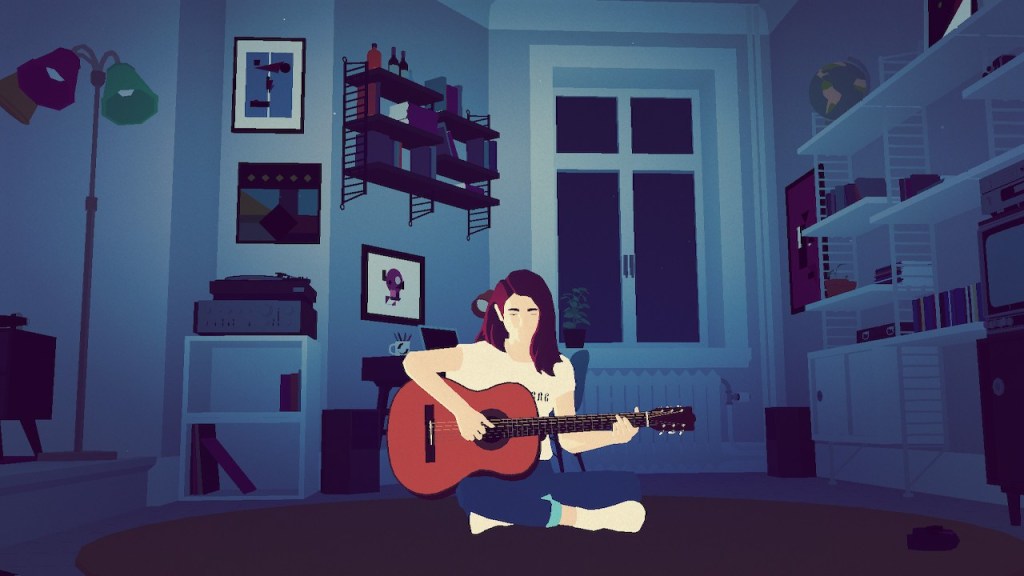
In the final scene we see the Fool once again in her room at home, her hair let down and longer to show that time has passed. She is sitting cross legged on the floor playing her guitar, appearing content, serene, healed and whole.
After all, wild hearts never die.
Thanks for reading.
Want to learn more about tarot or learn to read it? Join my tarot Discord community, Tarotholics!



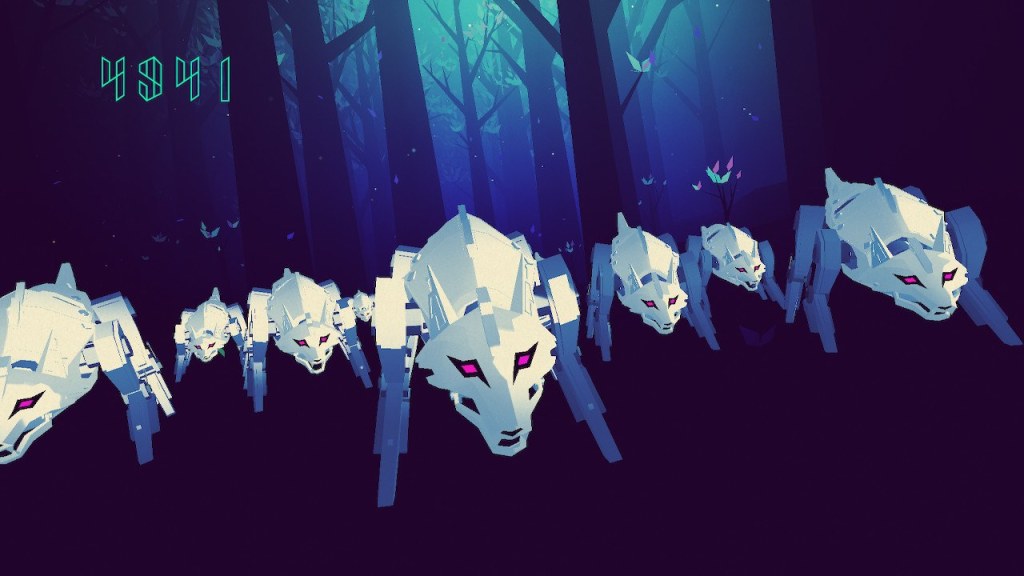
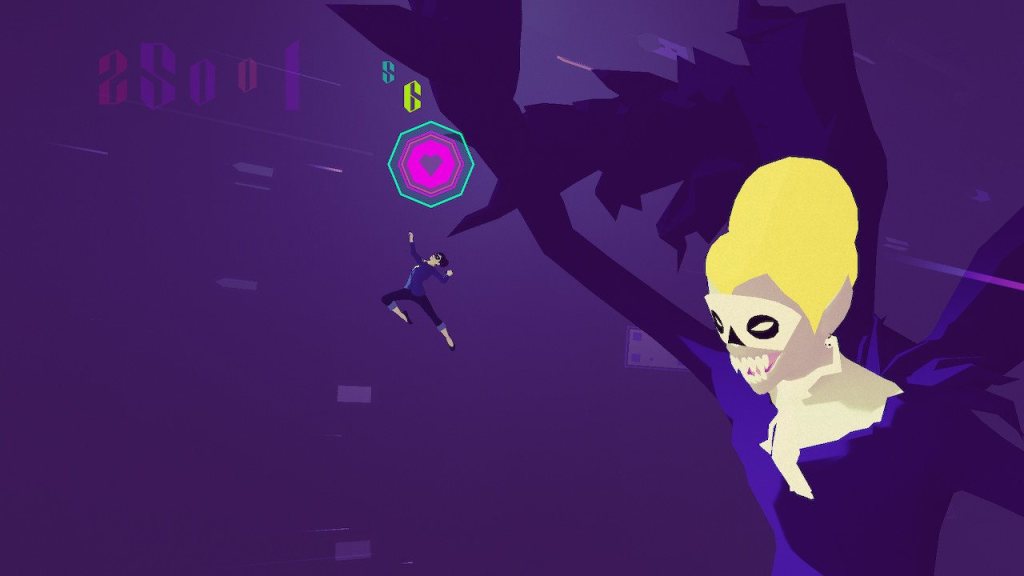




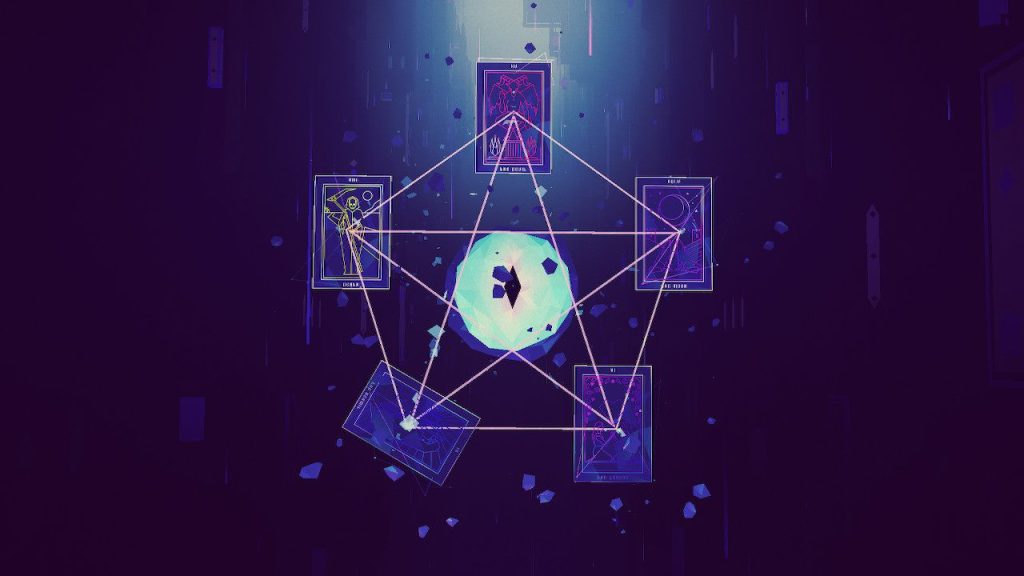


Thanks for this awesome writing! Fellow secular camper here, I have been wanting to get into Tarot cards recently, are there any good books or guides for people who are in the secular camp? I was always a little more hesitant to get the divination ones.
LikeLiked by 1 person
I actually learned from the Root Lock podcast. It’s fantastic!
LikeLike
Since you commented I’ve actually started up a tarot discord server and we just passed 500 members in less than a month and a half. We’d be happy to help you learn. Add me on discord if you are interested and I’ll shoot you an invite. 🙂 Ammers#4431
LikeLike
I absolutely loved this game. I didn’t expect the deep symbolism going in but I was pleasantly surprised. I’m familiar with Tarot themes in gaming via the Persona series and as soon as I saw Tarot in Sayonara Wild Hearts, I knew I was in for a great ride. Thanks for writing this, it was extremely fun to read and makes me want to play through the game again!
LikeLiked by 1 person
Thanks for reading it! I’m glad it was helpful. I actually admin both a sizable gaming Discord and one for tarot (just passed 500 members) as well. If you’d like to learn tarot we would be happy to help teach. We have quite a few gamers in the tarot group and you wouldn’t be the first who was interested in it from the Persona series. 🙂
Add me on discord if you’re interested in either and I can invite you. Ammers#4431
LikeLike
Hey Angie! Thanks for the great analysis, this all went right over my head the first time.
Your pointing out The Sun’s incongruous usage gave me an idea; when Death invokes this card, it rotates upside-down before manifesting. I tried looking up what “The Sun (Reversed)” means online, and some of my findings seem much more in-line with how the card is used in the game:
– inner child (Little Death herself)
– lack of enthusiasm, ego, conceitedness (Little Death’s demeanor, she yawns at you right before)
– negative energy/thoughts that close you off (the energy barriers)
LikeLike
Hi Zach! Thanks so much for reading and for your interest. The call to one’s inner child meaning is the most commonly agreed upon meaning of Sun reversed. I’d be interested to see what sites you were using for the others. It’s essentially universally agreed upon by tarot readers than the Sun is never a negative card and even when inverted never represents anything explicitly negative. Negative energy is not associated with the Sun card in either orientation. A damper on enthusiasm is indeed a commonly used meaning so the yawn is a good catch.
LikeLike
Hi again! After browsing a couple different pages, this is the main one I ended up referencing for my previous post: https://www.thetarotguide.com/the-sun
Bearing in mind of course that I am largely ignorant to this stuff so I’m probably missing important context in reading these cursory summaries.
LikeLike
Replayed and wanted to read about all the Tarot usage so thank you for the article!
I wanted to throw in that I think the Sun could still be seen in its traditional sense. I think it’s fair to say that the MC was experiencing a form of depression triggered by her break-up. Recovering from depression and regaining a feeling of clarity and joy feels wrong. Even scary. Like you can’t and/or shouldn’t trust those feelings. You could say it’s a shock to your system (bahahahah!). So accepting those feelings as true, sincere, and good is an obstacle. The last real obstacle between yourself and true rebirth.
See what I did there? Anyway, that’s my two cents and I wouldn’t have gotten there without your insight on the cards.
LikeLike
I’m flattered people are still reading this article! That’s a really good take, actually. With your permission, I could even edit it into the article with credit. I originally felt stuck trying to provide an answer for the Sun, but I like your interpretation a lot. Makes sense!
LikeLike